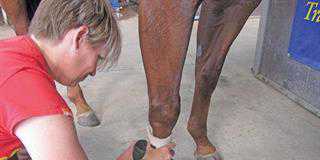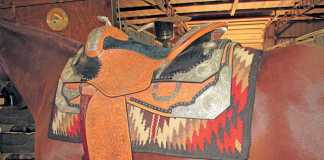
On 29 December last year, my mare blessed our stables with a healthy filly. The excitement was great. Everyone in the neighbourhood came to see the new arrival. If you’re dealing with a youngster, it’s best to be there from the very beginning. Then you know what he knows, how fast he learns and how he reacts to training.
It’s very satisfying to watch a foal grow into a trusted riding horse. On the other hand, it can also be frightening to think you – and you alone – are responsible for the future success or failure of your new foal, so ask for advice regularly.
Imprinting
The Austrian psychologist Konrad Lorenz coined the term “imprinting”. He noticed that goslings would follow the very first object they saw moving just after they hatched. If the gosling saw a dog, that’s what it would follow around, treating the dog as a substitute mother.
Think of the story of the ugly duckling – the baby swan at first thinks it’s a duckling and that it’s ugly because it doesn’t resemble its “siblings”. Some animals “imprint” themselves onto a substitute mother, even copying (as best they can) that animal’s behaviour. This also signifies that there are periods in a young animal’s life when it’s especially receptive to new information.
US equine vet Dr Robert M Miller discovered that foals handled straight after birth are much easier to train later in their lives and are a lot more confident. Today, he is a leading advocate of imprint training which is used all over the world.
Getting started
To set the process in motion, handle the foal within the first 45 minutes of its life and then at least twice in the next 10 days. Then you can let the foal imprint you as a safe figure in its life. Start the imprinting by slowly introducing yourself to the newborn. Crouch down to your foal’s level and allow it to sniff you. Gently put your fingers in its ears and mouth. Stroke its face, neck and body. Your foal will find this pleasing and will come looking for you in future.
Always hold your foal under its tail and in front of its chest. Foals’ legs are unsteady and they can hurt themselves seriously when trying to get away from you and falling over backwards. When you have your foal’s trust, put a foal slip on it, which is a soft head collar.
If done correctly, imprinting won’t interfere with a mare’s relationship with her foal. But make sure the mare is comfortable with your presence. Her attitude towards you will greatly affect the way the foal perceives you. Don’t stress the foal or the mother and the foal will be able to take the next steps in its life with confidence and boldness. When you approach a foal that hasn’t been handled regularly, mimic its actions.
If it backs away, you back away. If it moves forward, you move forward. This will stimulate great curiosity and the foal will come to you. It’s certainly better than chasing it and becoming a threat. And remember – all foals are born good and trusting. Not all end up good and trusting, though, because of negative handling experiences!
Contact Kim Dyson at [email protected]. Please state “Horse therapy” in the subject line of your email.













